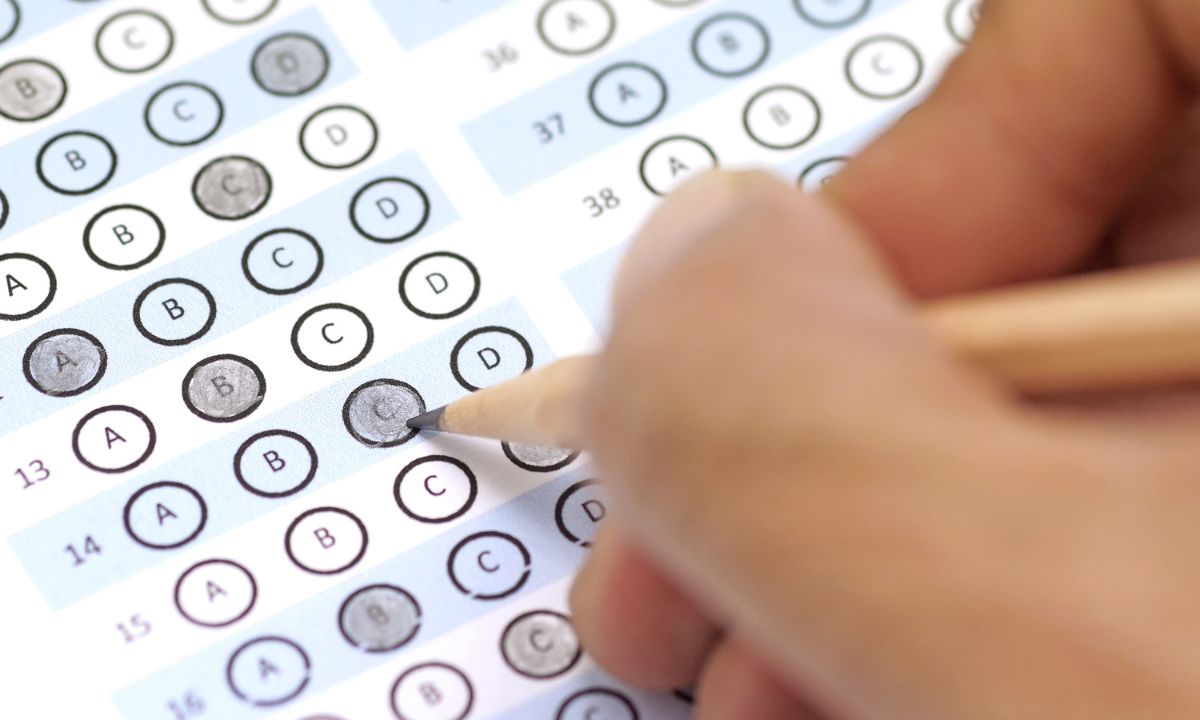Alaska Board of Education Lowers Test Score Standards Due to Nationally High Bar
State standards still among top third in nation, commissioner says.

Get stories like this delivered straight to your inbox. Sign up for The 74 Newsletter
The Alaska board of education approved lowering the test score standard for student proficiency, after school leaders cited the state’s nationally high bar.
Student success on standardized tests is categorized by what are known as cut scores, which are the range of results that show indicate a score is above or below proficiency for a grade level.
Alaska’s standards for proficiency have been among the highest in the nation, and some educators and officials have said that the state has set the bar, or the cut score, too high in some areas.
At its regularly scheduled meeting on Wednesday, the school board approved a series of adjustments to those standards for the Alaska System of Academic Readiness, known as AK STAR tests, which was proposed by the Department of Education and Early Development. It also updated regulations for administering assessments to students with disabilities.
DEED Commissioner Deena Bishop said the new cut scores are a better reflection of the kind of growth that is possible for typical students to achieve in the months between assessments. She said the adjustments may lower the expectations for proficiency, but that does not mean Alaska’s standards are now low.
“We’re still in the top third of all states in the nation for expectations and high standards,” she said. “We’re just not at the top anymore.”
Some members of the public were critical of the changes, and said the state should be supporting teachers and students rather than lowering expectations.
Timothy Doran, a former educator and administrator who now serves on the Fairbanks North Star School District Board, said he wants to see the state review its assessment standards before it changes cut scores, but added that he appreciated DEED’s process.
“We’re setting a cut score based against a standard which is 10 years old and have not been reviewed for whether they’re appropriate,” he said. “We’re applying it to a test for which we have not looked to say, ‘What’s going on here? Are students understanding these questions? Have we set that bar so high that students can’t get over it?’”
Haines Borough School District Superintendent Roy Getchell praised the department for its efforts. He served on the policy review for the regulation change.
“Assessments in Alaska around the country have had too many setbacks, stops and starts that have really kind of eroded the confidence of our processes, which is why it was critical that we get it right out of the chute. And I’m much more confident that what’s being presented today is going to be right from the start,” he said.
Lisa Parady, who has a doctorate in education leadership and is executive director of the Alaska Council of School Administrators, said policy reviews like this one are a normal process, and that the state has seen a lot of assessment changes over the years.
“We’ve seen a lot of changes, and now we’re on a good path,” she said. “It’s incumbent upon every one of us to make sure that what we put out is accurate and right and aligned, so that our teachers can get what they need in terms of the results of this assessment.”
Alaska’s STAR test results were delayed this year because of the change to cut scores, the department said.
Alaska Beacon is part of States Newsroom, a network of news bureaus supported by grants and a coalition of donors as a 501c(3) public charity. Alaska Beacon maintains editorial independence. Contact Editor Andrew Kitchenman for questions: info@alaskabeacon.com. Follow Alaska Beacon on Facebook and Twitter.
Get stories like these delivered straight to your inbox. Sign up for The 74 Newsletter

;)